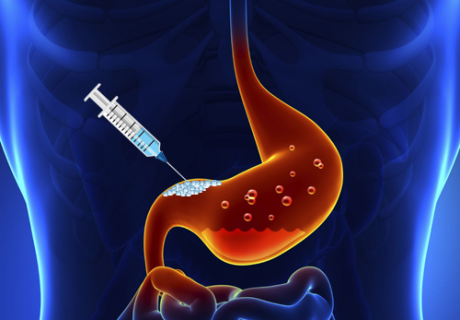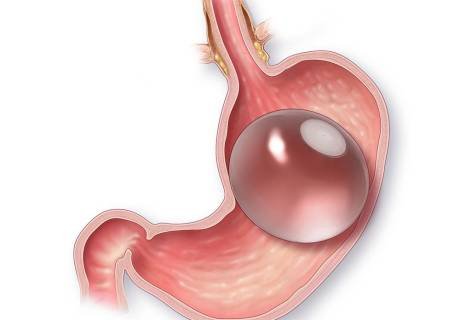What is Obesity?
Obesity is a condition that is secondary to severe weight gain and characterized with abnormally high fat deposition in body. It is the second most common preventable cause of death following smoking. Genetic and environmental factors (unhealthy eating habits, inactive or sedentary life) play role in development of obesity. Fat deposition is rather observed in central-visceral area (tummy and internal organs), while it prefers peripheral areas (around buttocks) in women. Obesity is associated with following diseases that are listed according to prevalence: degenerative joint diseases; lumbalgia; hypertension; obstructive sleep apnea; gastroesophageal reflux disease; cholelithiasis (stone in bile ducts and gall bladder); type 2 diabetes mellitus; hyperlipidemia; hypercholesterolemia; asthma; fatal cardiac arrhythmias; right heart failure; migraine; venous stasis ulcer; deep vein thrombosis; fungal infections; dermal abscesses; stress urinary incontinence; infertility; dysmenorrheal; depression; abdominal wall hernia and higher prevalence of cancers (uterus, breast, colon and prostate gland).
What is Obesity Surgery?
Bariatric surgery is the medical term for surgical treatment of obesity. When volume of stomach is reduced, person can eat less food and will feel full earlier. When associated with balanced calorie limitation and lower consumption, feeling full will lead to controlled weight loss. Surgical procedures are performed with laparoscopic (close) technique. The technique is preferred, as complications of surgical procedure (pain) are significantly minimized and this technique offers certain advantages (ability to resume normal life earlier and surgical site is accessed easier).
What is sleeve gastrectomy?
This procedure is also called laparoscopic sleeve gastrectomy. It is the surgical procedure that is primarily preferred and commonly performed in obese patients. Major aim is to reduce capacity of stomach in terms of volume. In simplest terms, approximately 70-80 percent of stomach is removed and the stomach is reconstructed in the form of a tube. Small intestines are not touched or modified in this procedure and therefore, absorption of nutrients is not affected; if there is not any problem in oral intake, vitamin or element deficiency is not expected.
What is Transit Bipartition?
Although it is one of metabolic surgery (Diabetes surgery) procedures, it is, recently, preferred commonly due to its efficiency in patients with insulin resistance in addition to the weight loss effect. It can be simply defined as reduction of stomach followed by connection of the stomach to the small intestinal segment. Vitamin or element deficiency is not expected, as absorption area of the small intestine is not shortened.
What is Gastric Bypass?
This surgery not only limits food intake, but it also reduces absorption of nutrients. Although it is one of primary techniques used in metabolic surgery procedures, it has lost popularity, as it causes serious absorption disorders and its efficiency is low in the long term.
What is intragastric balloon?
This procedure is called intragastric balloon. A balloon is placed into the stomach with an endoscopic procedure; the balloon is inflated and left inside the stomach for 6 to 12 months. Next, the balloon is removed again with an endoscopic procedure. This approach is preferred in patients, who have high surgery risk or do not want to undergo a surgery.
What is Gastric Botox?
Botulinum is injected to multiple sites in interior surface of the stomach with endoscopic technique. The aim is to limit contraction of gastric muscles partially in order to delay gastric emptying time. This procedure is characterized with weakest weight loss efficiency.
Pre- and Post-operative Process
Following laboratory and radiology testing as well as endoscopic examination, a detailed evaluation will be made by physicians of relevant departments. You will be hospitalized on the day of surgery. Total hospital stay is 3 days. Your surgeon and dietitian will inform you about necessary details at discharge phase and you will be supported and followed up even after you are discharged.
What is Diabetes?
Diabetes mellitus is a condition characterized with high blood sugar due to deficiency or dysfunction of a hormone, which is called insulin that is produced in pancreas and plays a role in regulation of glucose in body. It is the most important cause of renal failure and loss of vision. It has two types: Type 1 and Type 2. In patients with Type 1 diabetes mellitus, there is almost no insulin in body and these patients should give insulin injections throughout their lives. On the other hand, body produces insulin in Type 2 diabetes mellitus, but blood glucose cannot be regulated due to disorders in glucose metabolism. Oral antidiabetic agents are used in treatment, but insulin shots can be required in subsequent phases.
How is Diabetes Mellitus Diagnosed?
Diagnosis is based on laboratory tests. These tests are fasting and post-prandial blood glucose, HbA1c (mean blood glucose in a period of 3 months) and OGTT (oral glucose tolerance test). After diagnosis is made, differential diagnosis of Type 1 and Type 2 diabetes is made using various tests.
What is Treatment of Diabetes?
Insulin is a must in treatment of patients with Type 1 diabetes mellitus; patients with Type 2 diabetes mellitus are primarily started on oral antidiabetic drugs that are combined with insulin in subsequent phases.
What is Metabolic Surgery?
Type 2 Diabetes Mellitus is a condition that can be surgically treated in patients, who meet certain criteria. This procedure is called Metabolic Surgery (Diabetes Surgery). The prerequisites of metabolic surgery are Type 2 diabetes mellitus and sufficient insulin reserve and response. Use of oral antidiabetic drugs or insulin is not a contraindication for the surgery. However, patients with Type 1 diabetes mellitus cannot be surgically treated, as surgery does not help the condition at all. Metabolic surgery is based on the principle of re-activating the insulin that is produced by body, but does not function well. The major aim is to active a group of hormones (such as GLP-1) that are produced in terminal part of small intestine (ileum) and increase sensitivity and efficiency of insulin. Considering this purpose, common feature of surgical procedures is to transfer ingested foods to ileum quicker (such as transposition of intestines and quicker food transit to the efficient area).
What is Transit Bipartition?
Transit bipartition can be defined as partial removal of stomach (40-50%) with laparoscopic technique followed by connection of stomach to the small intestine in the form of a second outlet tract. Thus, foods are transferred through native route and the new route. It is an efficient surgery that does not only facilitate weight loss, but it also ensures regulation of blood glucose.
What is Ileal Interposition?
The major aim is to reduce food intake and transfer foods to terminal part of small intestine as quickly as possible. A small part of stomach (20-30%) is removed to achieve this purpose and next, terminal part of small intestine is interchanged with the middle segment, outlet tract of the stomach is closed and the stomach is connected to the interposed terminal part of small intestine. Thus, food is transferred to the efficient segment through bypass of the small intestinal segment and therefore, vitamin absorption disorder is not expected. It is the most efficient metabolic surgery procedure that can be also considered for patients, who do not have obvious body weight problem. It should also be preferred in patients with relatively limited insulin reserve.
Pre- and Post-operative Process
Following laboratory and radiology testing as well as endoscopic examination, a detailed evaluation will be made by physicians of relevant departments. After functional capacity of pancreas and insulin reserve are determined, appropriate surgical procedure will be decided. You will be hospitalized on the day of surgery. Total hospital stay is 4 days. Your surgeon and dietitian will inform you about necessary details at discharge phase and you will be supported and followed up even after you are discharged.
Cost of Obesity and Metabolic Surgery Procedures
Please contact us to be informed about prices of obesity surgery and metabolic surgery.



